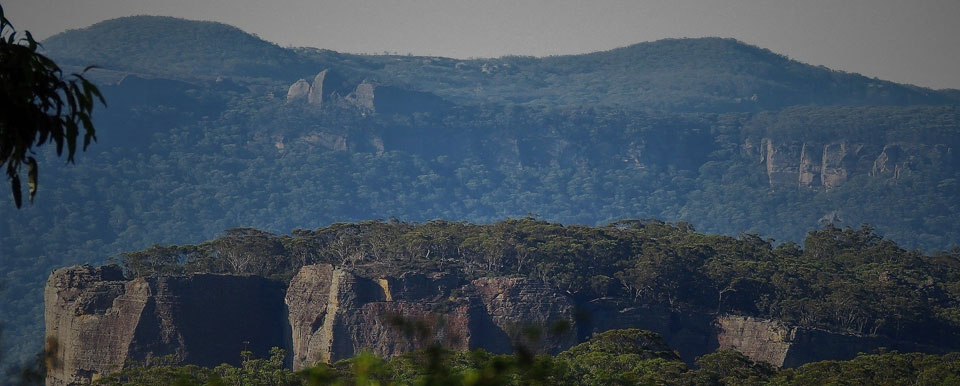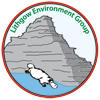 Richard Stiles
Richard Stiles
Dr Stiles works as a medical practitioner in Lithgow. His medical work has led him to a concerned awareness of the burden of disease and premature mortality that the Lithgow region shares with other coal communities in Australia and around the world.
A variety of health studies point toward the environmental impacts of coal mining and burning, and how these interface with human health issues.
However it is an area that is generally under-studied, especially given the magnitude of the health problems that are shared by these communities. Mining and power generation companies have not undertaken detailed studies of the health impacts of their industries. In the absence of these, it will be important for public health authorities to more comprehensively analyse the nexus between coal and human health – especially as these relate to local mining communities."
Later this month, Environmental Justice Australia will release a report into the health impacts of air pollution from NSW power stations. Coal-fired power stations are one of the biggest sources of air pollution in Australia, causing asthma and other respiratory problems, reduced birthweight, diabetes and premature death. Community health is impacted in communities near power stations and up to 200km away including Sydney. Air pollution is poorly controlled in NSW. The report is the first of its kind in Australia. Its findings will be delivered by the author Dr Ben Ewald, an epidemiologist and air pollution expert, through a series of public forums across NSW. These forums come at an important time. The pollution licenses for coal-fired power stations are currently under review by the NSW EPA. Best practice pollution controls to reduce toxic pollution by up to 95% are required for coal-fired power stations in other countries and should be installed here.
Details of the forums are below. Be sure to RSVP and spread the word.
Uniting Church Parish Hall Lithgow
Speakers: Dr Ben Ewald, Dr James Whelan
Postscript: In November 2018 the EJA released the Report on the health burden of fine particle pollution from electricity generation in NSW
As the sun comes up, we turn on our kettles to make the brews that open our eyes to the new day. Back in the power stations the confluence of these little actions requires a major burst of electricity to go out into the grid. The coal furnaces are opened up – 10 million cuppas go up the stacks.
What’s it like to live in a coal community?
Coal communities are often proud of their heritage, of the hard work that has made that heritage. There remains a solidarity and community feeling within these communities that is fast disappearing in the cities, where most of us now live. They can also feel defensive, as the role of coal in our world has become more challenged.
I work as a doctor in Lithgow, one of these coal communities – and I have come to see another side, another cost, of our modern power needs: illness and death.
Lithgow shares a health profile like many of the coal communities: high asthma rates (especially children), higher levels of diabetes, heart attacks, strokes and cancers, and more premature deaths. The political apparatus tries to push these off on to people’s adverse lifestyle choices – too many Big Macs and ciggies, not enough exercise. It’s always easier to blame people for their bad choices.
But why do coal communities have worse health figures than other communities with similar lifestyle profiles? Surely it couldn’t be their environments, with their local industries that mine and burn your morning cuppa?
Illness and death for jobs is the unspoken rationale. If people can earn money digging up and burning coal, then they can accept dying a bit earlier. That’s fair enough, isn’t it?
William Castleden et al, in the Sept. 2011 Medical Journal of Australia, have outlined, "The mining and burning of coal: effects on health and the environment". It is stark reading. Mining and transport accidents, adverse local health profiles – of both body and mind, local and global environmental costs (global warming not the least) – these are the tailings of our cups of coffee, at least currently while 84% of them are made from coal-generated power in this country. The authors hold that if the full social, health and environmental costs of coal are included, it is far from a cheap energy source.
Why do we keep mining and burning coal? Clearly it’s about money - for governments and mining companies (with a diminutive trickle to local communities) - and about ‘cheap’ power – cheap because the costs are carried by less fortunate others.
We have some new initiatives in our region. The mining companies, Coalpac Pty Ltd and Enhance Place Pty Ltd, are seeking to significantly expand their open cut mining operations via the Coalpac Consolidation Project and the Pine Dale Stage 2 extension, respectively.
Consider the residents of Cullen Bullen and Blackmans Flat. If Coalpac Pty Ltd gets its way, Cullen Bullen will be almost completely ringed by open cut mines. While residents sip their morning cuppas, they will also be hearing and feeling mining blasts that shake their dwellings, and breathing in dust clouds that filter into their homes.
If Enhance Place Pty Ltd succeeds, Blackmans Flat residents will need to contend with an industrial assault on their local landscape – levelling pagoda-filled hills, razing the biodiverse forest that unfortunately sits over the coal. They already live under the shadow of the Mt Piper coal-fired power station, with its pollution and overflowing fly ash dam.
Even the mining orientated Lithgow City Council has voted against Coalpac’s proposal. They too are aware that these new open cut mines represent a significant increase in impact when compared to the traditional underground mines of the region.
Only 2 of the last 1000 or so mine applications have been rejected by the NSW government - one because the mines had the gumption to suggest mining out the horse studs of the rich and famous, the other because of overwhelming social and environmental costs.
We have so many reasons to move away from coal - or else, ultimately, it will not just be those poor bastards in Cullen Bullen and Blackmans Flat who will be the unfortunates. It will be all of us. How much effort is it worth to us, to try to extricate ourselves from this sooty mess?
I hope these mines won’t go ahead. I hope these towns will retain the rich natural heritage of their hinterlands. I hope the locals can partner with industry and use their region’s assets in other ways. We all deserve the right to live in a healthy community.
This is a microcosm of the shift – in thinking and in living – that we all need to contemplate.
Enjoy your cuppa!
Dr Richard Stiles
Medical practitioner, with an interest in moral philosophy and human sustainability
Toxic and terminal: How the regulation of coal-fired power stations fails Australian communities is the result of exhaustive research, Freedom of Information searches, surveillance of Australia's major power stations and advice from health experts and industry whistleblowers. The report finds:
- Coal-fired power stations emit more than 30 toxic substances and are Australia's biggest source of fine particles (PM2.5), sulfur dioxide (SO2) and oxides of nitrogen (NOx).
- These substances cause and contribute to asthma, lung cancer, heart attacks, stroke, respiratory disease, headaches and nausea in nearby communities.
- In most cases emissions limits in Australia are much more lax than those in the US, EU and China.
- Mercury limits for some NSW power stations are 666 times higher than the US limits.
- Pollution reduction technologies that have been available for many years and are used overseas could significantly reduce power station emissions but are not in use in Australia.
- New coal-fired power stations, even those described as 'ultra-super critical' or 'HELE' (high efficiency, low emission) only marginally reduce toxic emissions
- Despite much evidence of failure to comply with pollution licence conditions, no power station in Victoria, NSW or Queensland has been prosecuted for any offence in the past ten years (instead they have been issued with inadequate penalty notices).
Read the full report: Toxic and terminal - How the regulation of coal-fired power stations fails Australian communities (PDF, 4MB)
Read the executive summary and recommendations
You can let our government know this is not good enough. All coal-fired power stations need to significantly reduce their toxic emissions, and all Australian governments need to publicly commit not to build, finance or approve any new coal-fired power stations.
More information: https://envirojustice.org.au/our-focus/coal-pollution/

